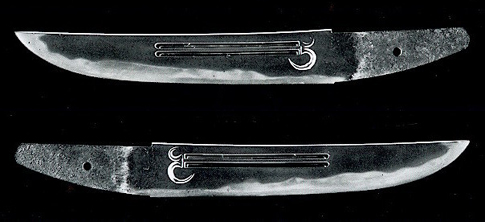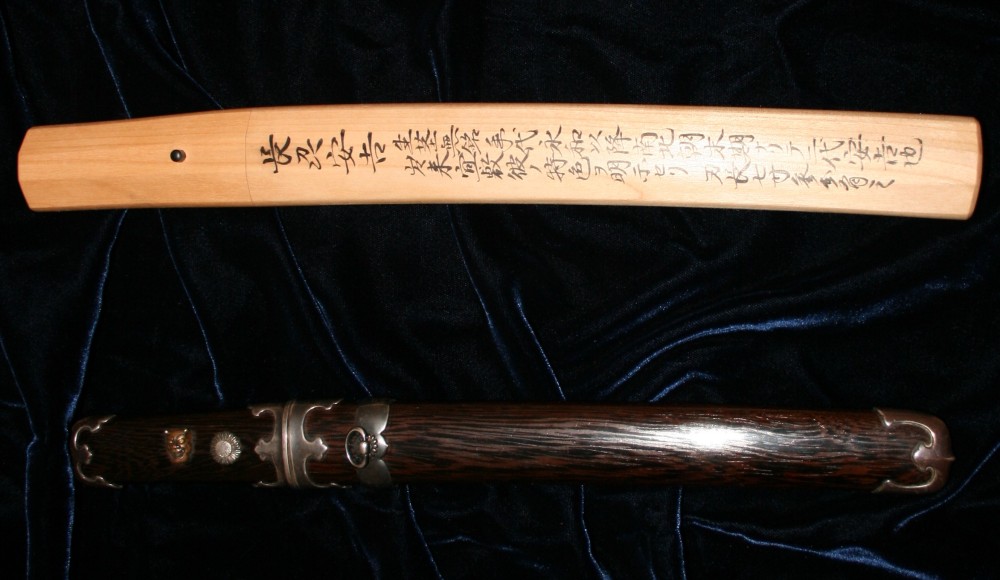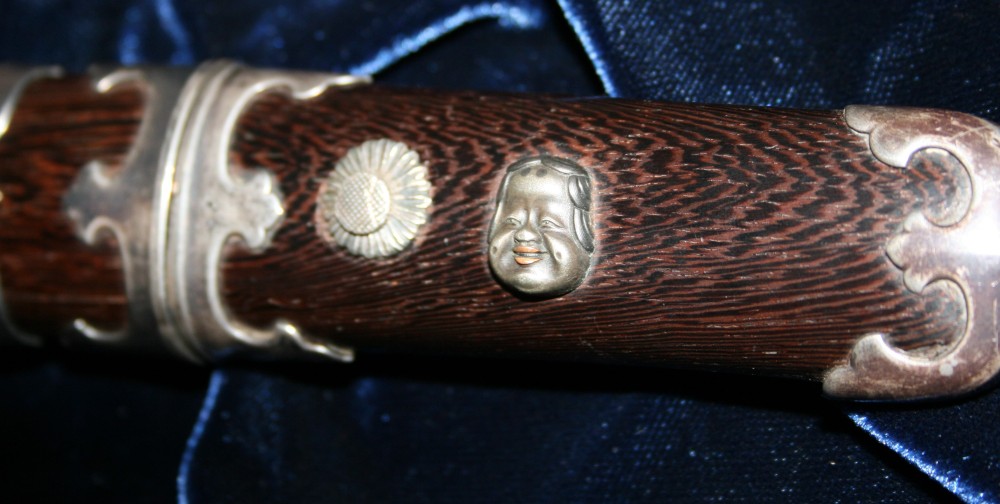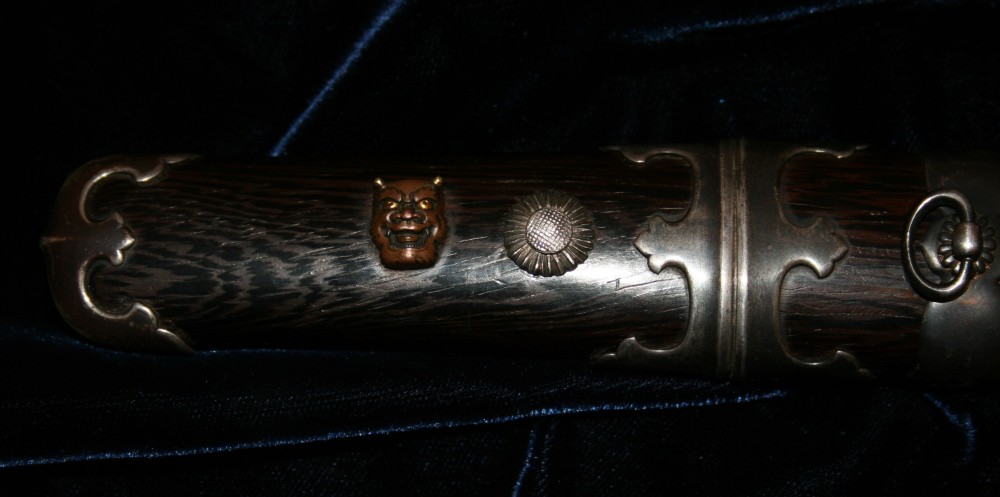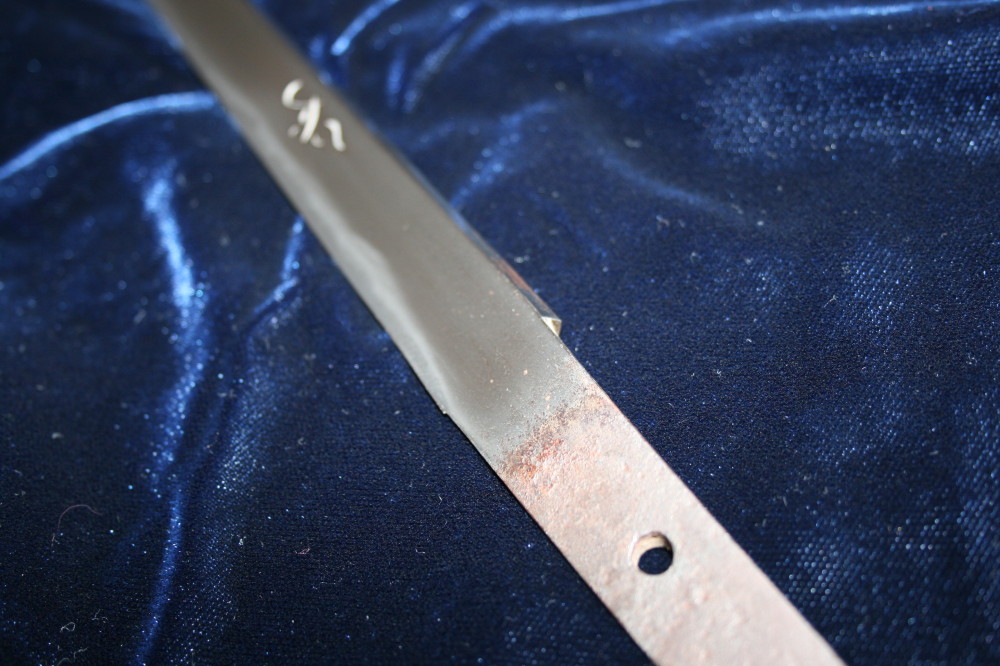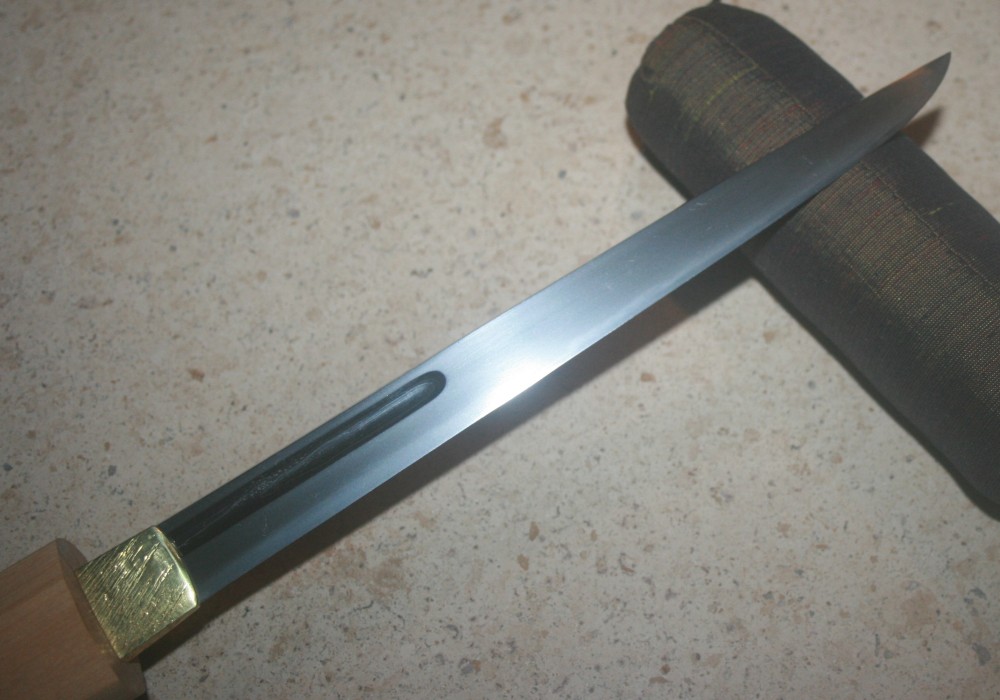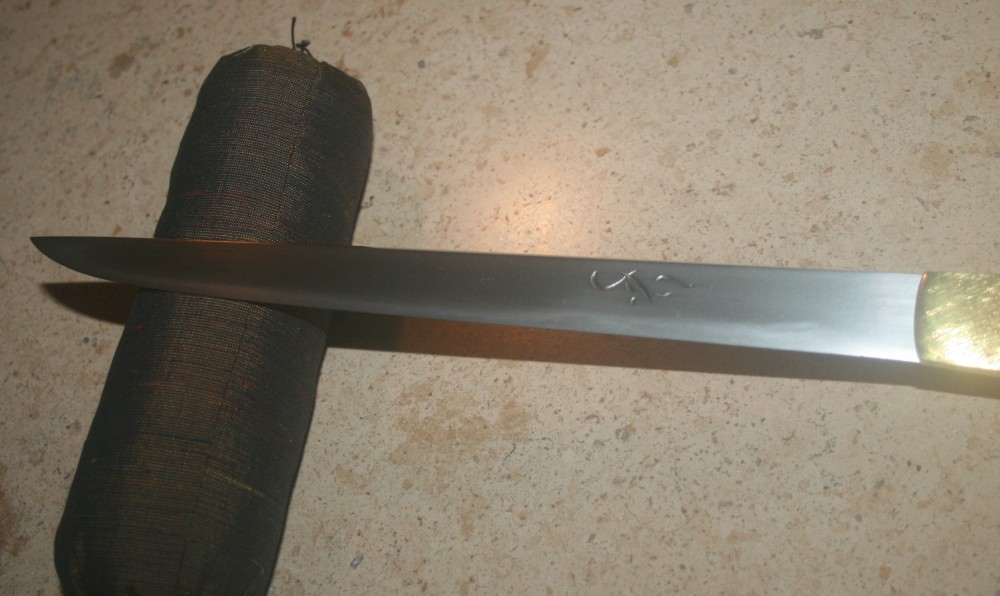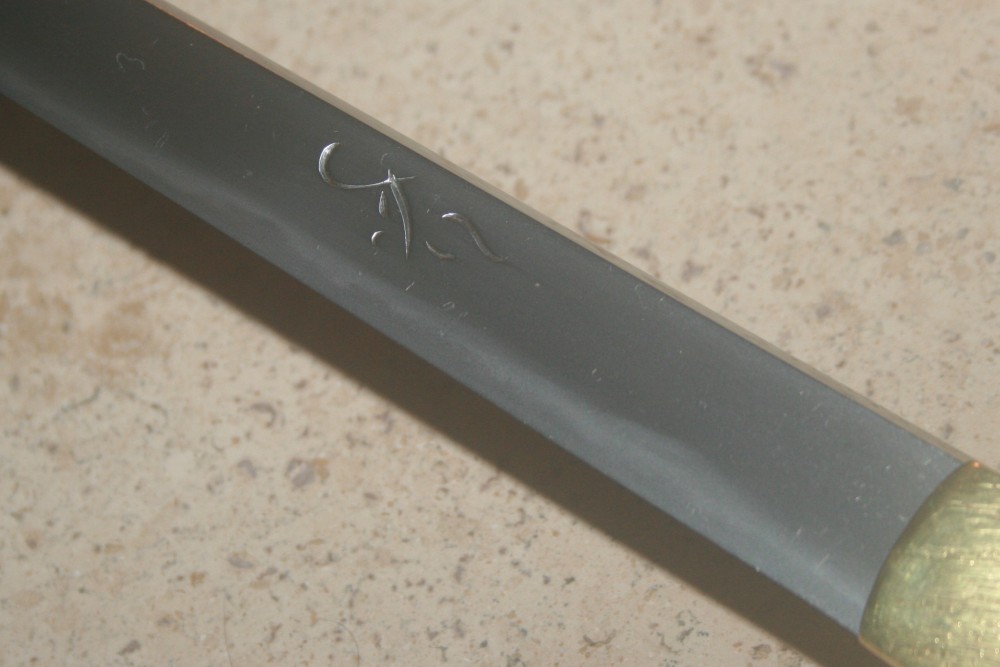Yasuyoshi Tanto
Sa Yasuyoshi Tanto
It seems that the Chikuzen Sa Den branched to Nagato in the later years of the Nambokucho Period. Some [perhaps later] work bears the signature Chōshū-jū Yasuyoshi“ (長州住安吉) and Chikushū-jū Yasuyoshi (筑州 安吉).
There is speculation that Sa Yasuyoshi and Nagato Yasuyoshi were different smiths. Most nomenclature infers there is a relationship, however uncertain.
The NBTHK attributes this blade to Choshu Yasuyoshi. Tokubetsu Hozon papers attest to its fine workmanship and justifiable attribution. Getting an attribution to a certain smith is sort of a quality rating in itself. An attribution to Yasuyoshi means that it is a high quality sword demonstrating the characteristics of that school.
The hirazukuri sugata is in classic Koto form with horimono & bonji. The hamon is midare with a notare flow. The boshi is jizu. There is beautiful hataraki and utsuri found upon close study. The ko itame hada shows exceptional forging skill. This is an elegant tanto for the koto connoisseur.
Sensei Tanobe specifically attributes this blade to Nidai Yasuyoshi. Notice the extensive commentary.
His sayagaki reads:
The workmanship is well founded,and it explicitly shows those characteristics. Blade is 7 sun, 3 bu. Ubu Nakago. Mumei. Time period is after Eiwa. Nambokuchu end of. Nidai Yasuyoshi this is.
This tanto appears in the Token To Reikishi 542, cataloging Sensei Yoshikawa’s visit to the USA. Sensei Yoshikawa was reported as saying, seeing this tanto was the highlight of his trip.
Yasuyoshi is listed in Fujishiro as Jojo Saku, the second highest rating.
Equally impressive is the exceptional koshirae. The harwood base is adorned with fine silver matching fittings. The koshirae theme is represented by Hanya and Otafuku. Hanya represents a jealous female. Fortunately, she is balanced by Otafuku (Okame). Otafuku represents a lovely, always smiling Japanese woman who brings happiness and good fortune to any man she marries. She is also known as the Goddess of Mirth. Different sides of the same; this seems like a common theme that transcends all cultures.
